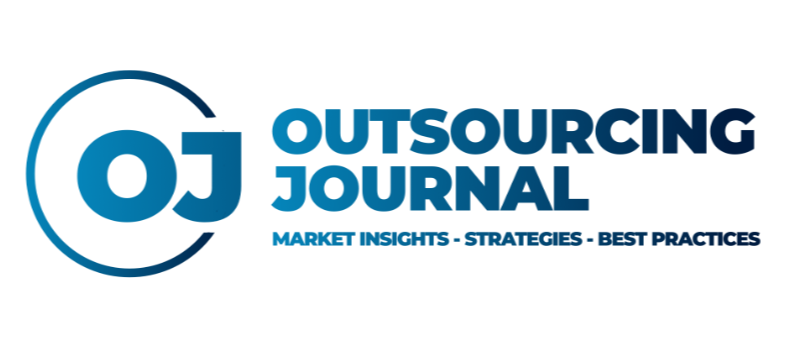[vc_row][vc_column][vc_column_text]By Dr Damian Kedziora, Doctor of Industrial Engineering and Management graduated from Lappeenranta University of Technology, Postdoctoral Researcher at Hanken School of Economics and Solution Consultant at NORIAN Intelligent Automation.
Robotic process automation (RPA) has lately gained the status of a disruptive technology that revolutionized global service delivery market. With a compound annual growth rate (CAGR) of 29% during 2017-2023 (Reuters, 2018), the number of software robots automating repeatable tasks is estimated to reach 4 million by 2021 (Forrester, 2018) and release millions of employees from boredom, enabling their job profiles to transform onto more creative, highly reliant on human talent, empathy, negotiation and customer consultancy. This industry technology, widely implemented at various industries like healthcare, banking, insurance services, manufacturing, pharmaceuticals, back office, customer service, payroll, HR, accounting, telecommunications, has brought to business multiple value types, such as cost savings, increased efficiency, value co-creation focus, human labor/workforce reduction, quality improvement, ease of use, performed tasks volume increase, stable and accurate performance etc.
The future of RPA solutions was supposed to be driven by the enhancement of this technology with elements of artificial intelligence (AI), enabling robots to ‘see and read’ unstructured text, learn, detect anomalies, forecast and make decisions (Syed at al., 2020). Such technologies are machine learning (ML), optical character recognition (OCR) cognitive platforms, pattern analysis, voice recognition, data classification and clustering etc. Nevertheless, how will the COVID19 pandemic impact the rapid growth of RPA implementations, when it comes to its size and technical capabilities?
It is certain that in the next months and even years, global economy shall seriously suffer from the surrealistic shut down of multiple industries, resulting in the immediate interruption of supply chains that have been getting more and more globalized over the past decades. We have lately observed substantial uncertainty in regards the time and scale of the coronavirus pandemic, as well as its impact on corporate decisions. Many organizations shall focus on securing its liquidity and operational continuity, in the same time holding their digital transformation and process improvement initiatives. Others shall prioritize automation that allows for remote deployment and management of bots, in the same time minimizing the risk and ambiguity at service delivery.
One possible scenario is that in the spring bringing temporary relief to currently hugely affected nations and companies, some organizations shall speed up the robotization waves in order to get prepared for the second wave of pandemic that may result in lay offs or closing down some businesses. As stated by Field and Murphy (2020), the corona pandemic will send millions of workers home and fired, as some of their jobs may be passed to robots and automation is already filling some of the value chain gaps. As we can read in their paper, according to Arun Sundararajan, an NYU Stern School of Business professor, the coronavirus crisis can act as an accelerant to such digital transformation an, as well as Mark Muro, a senior fellow and policy director who researches automation at the Brookings Institution who told that “Economic literature over the last decade shows that these investments are made especially during a crisis.” As further noted by Rajan Kohli, global head of Wipro Digital, the affected businesses shall start adding automation to operations not only to make them more resilient to disruption but can also cut costs in the long run.
Multiple functions and processes in supply chain as well as among consumers has also been listed by Professor Wojciech Piotrowicz from Hanken School of Economics (2020), such as 3D printing, autonomous and remotely controlled vehicles (RPA, UAV), data visualization and geographic information systems (GIS), data analytics and big data, mobile technologies, virtual meetings, distance work and online teaching, documents digitizing and social media. Despite the widely emphasized uncertainty of the forthcoming months, the close collaboration of organizations and academic can facilitate the common response aimed onto smoothening the results of corona crisis.[/vc_column_text][/vc_column][/vc_row][vc_row][vc_column width=”1/4″][vc_single_image image=”6179″ img_size=”full”][/vc_column][vc_column width=”3/4″][vc_column_text]Damian Kedziora, Doctor of Industrial Engineering and Management graduated from Lappeenranta University of Technology, professionally engaged in digital transitions at global services. Currently, he works in Helsinki as Postdoctoral Researcher at Hanken School of Economics https://www.hanken.fi/en and Solution Consultant at NORIAN Intelligent Automation team https://www.norian.eu/robotics/. He focuses on researching, modelling and implementing modern tech solutions, such as robotic process automation (RPA), machine learning (ML), optical character recognition (OCR), natural language processing (NLP) and chat/voice bots.[/vc_column_text][/vc_column][/vc_row][vc_row][vc_column width=”1/4″][/vc_column][vc_column width=”3/4″][vc_column_text]1. Forrester (2020) Building a Center of Expertise to Support Robotic Automation: Preparing for the Life Cycle of Business Change, http://neoops.com/wp-content/uploads/2014/03/Forrester- RA-COE.pdf.
2. Field, H. & Murphy, M. (2020) COVID-19 will herald an automation boom, https://www.protocol.com/automation-boom-caused-by-coronavirus
3. Piotrowicz, W. (2020) Digitization and technology in supply chain, during pandemics and beyond // https://www.linkedin.com/pulse/digitization-technology-supply-chain-during-pandemics-piotrowicz/?fbclid=IwAR0Kp04DbrFuDhPZN3hHoP0kq4PWYfvr5vVmEaVn0TBogxZ5ffAeeg3KxeM
4. Reuters (2018): Robotic Process Automation (RPA) Market 2018 Key Highlights, Future Opportunities, Industry Trends, Share, Development Policies and Future Growth
Picture: Dan Burton via unsplash.com[/vc_column_text][/vc_column][/vc_row]
